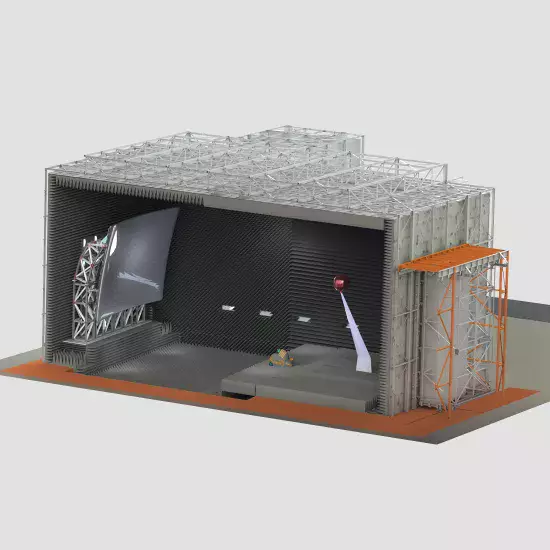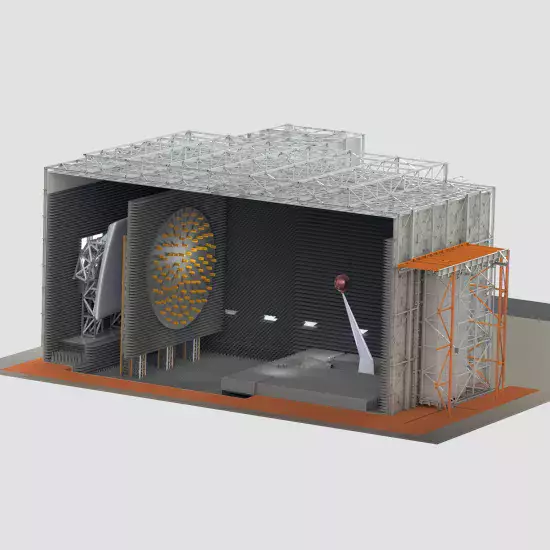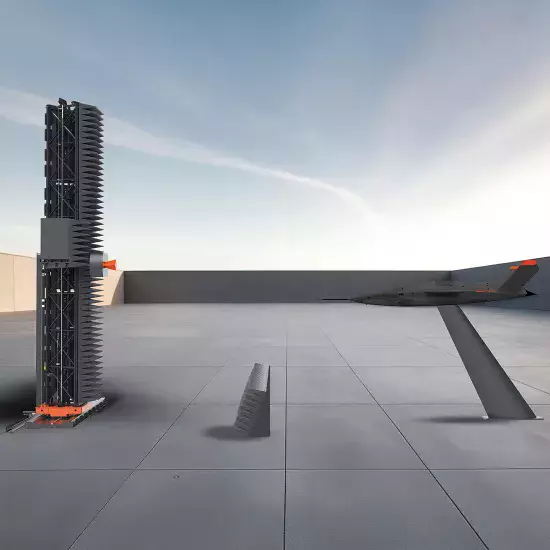参考文献
Far-field
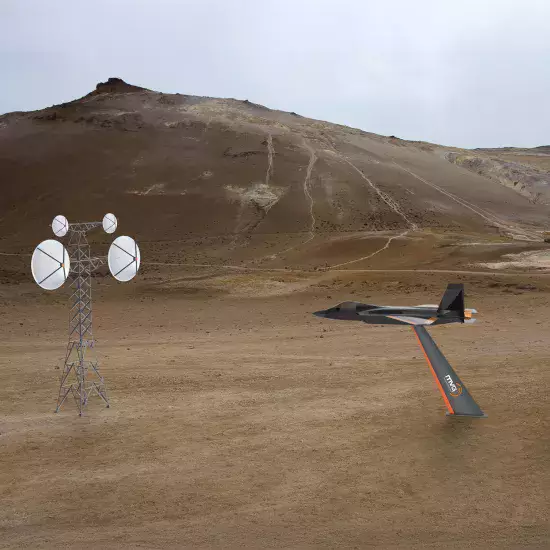
Outdoor Ranges
Specifications
Frequency
- 0.4 - 18 GHz (typically)
Pylon
- Changeable pylon tips for different measurement targets
- Pylon can be concealed within the concrete reaching into ground level for ease of target mounting
Adjustable Height Tx/Rx Station
- Different antenna height configurations, depending on target distance and frequency allows better ground bounce control
Clutter Control
- Different possible radar fence configurations for reduce ground bounce effect
Control Room
- Can be facilitated as fixed ground station or mobile down range vehicle
Planar and Cylindrical Near-Field
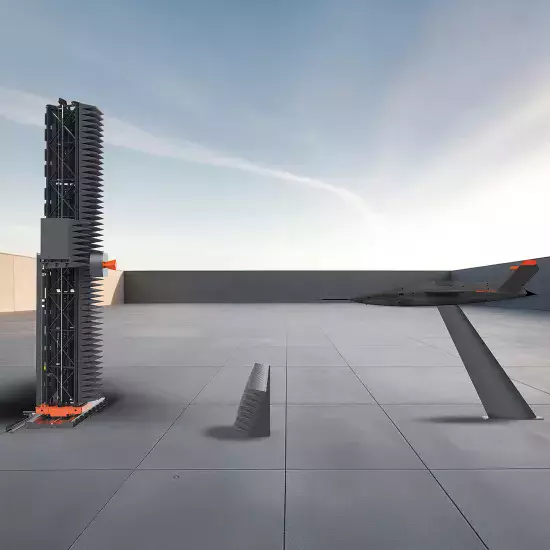
Outdoor Ranges
Specifications
Frequency
- 0.4 - 18 GHz (typically)
Target
- Full-scale target measurement at short distances
- Applicable to both model and real targets – as - is / before take-off
- Fast check of platform RCS configuration
- Maintenance purposes during platform life cycle
Measurement Configuration
- SAR vertical scan (2D) in front of the target by means of Y tower scanner
- ISAR complete 3D scan by means of Y tower scanner and Pylon (AZ/EL)
Tapered Chamber
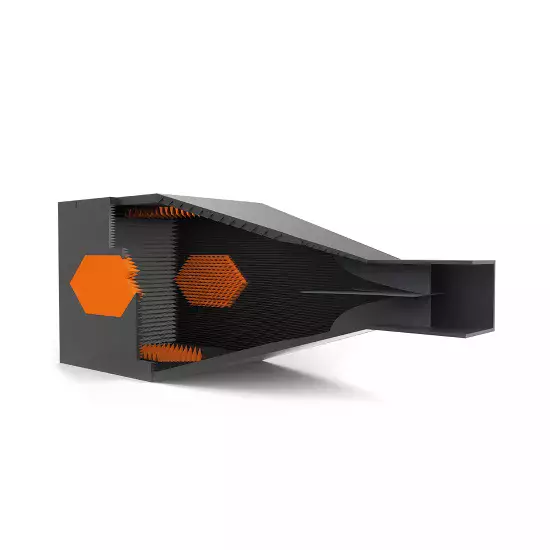
Indoor Ranges
Specifications
Frequency
- 0.1 - 2 GHz (typically)
Reduced reflectivity
- Tapered walls design minimize internal reflections by directing stray signals towards chamber back wall
Clutter control
- Fewer multiple reflections and reduced background noise, improving signal-to-noise ratio
Integrated tapered feed
- For high cross pol and planar wave front control performances
Compact Range
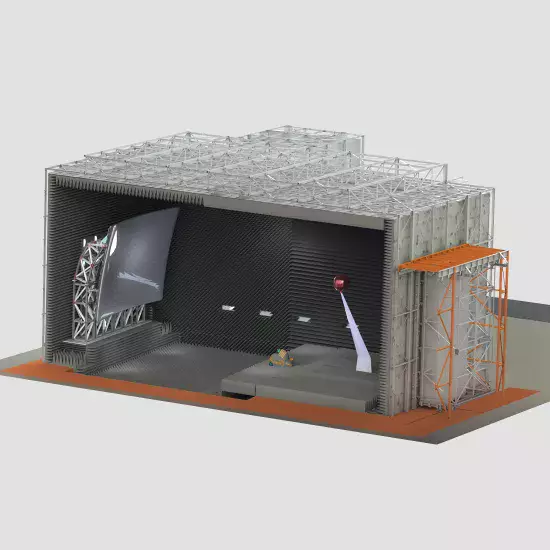
Indoor Ranges
Specifications
Frequency
- 0.7 - 110 GHz (typically)
Capabilities
- Automatic feed selection for continuous full frequency coverage
- High system dynamic range and high sensitivity
- High cross polar performances
Chamber clutter
- Well below RF system noise
Flexible and modular target positioning
- Pylon, Styrofoam, etc.
Reflector
- High surface accuracy to support mm-wave measurements
Plane Wave Generator

Indoor Ranges
Specifications
Frequency
- 0.1 - 1.0 GHz | Sub 6 GHz (typically)
Capabilities
- Gain
- Beamwidth
- Sidelobe levels
- Radiation pattern in any polarizations (linear or circular) and cross-polarization
- Radome measurement
- Directivity
- 2D and 3D radiation patterns
- RCS measurement
- EIRP and G/T
Planar / Cylindrical Near-Field
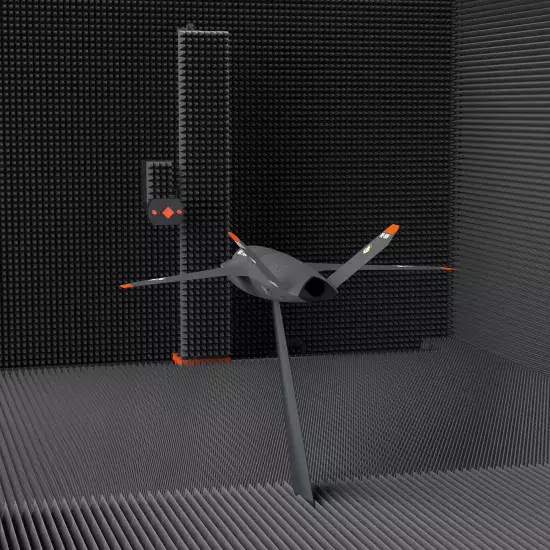
Indoor Ranges
Specifications
Frequency
- 1.0 - 40.0 GHz (typically)
Capabilities
- NF to FF correction in the ISAR software tool allows focalization of the radar image
- Effectively mitigate clutter through advanced data processing techniques and high-resolution capabilities
Compact Test Environment
- NF RCS ranges require much less physical space than traditional far-field ranges, making them ideal for indoor labs, production environments, or urban locations
Cost Efficiency
- By avoiding long distances needed in far-field setups, NF RCS ranges reduce infrastructure and operational costs
Enhanced Measurement Flexibility
- The test setup allows for multi-angle and multi-polarization scanning, and can handle complex test scenarios
SAR and ISAR Imaging Capabilities
- NF RCS systems can generate SAR (Synthetic Aperture Radar) and ISAR (Inverse Synthetic Aperture Radar) images, providing high-resolution radar imagery of static or moving targets
- SAR allows imaging by virtually moving the radar around a stationary target
- ISAR captures images of a moving target using its motion to synthesize the aperture.These capabilities are invaluable for feature identification, scattering analysis, and target classification
Dual Gantry Bi-Static
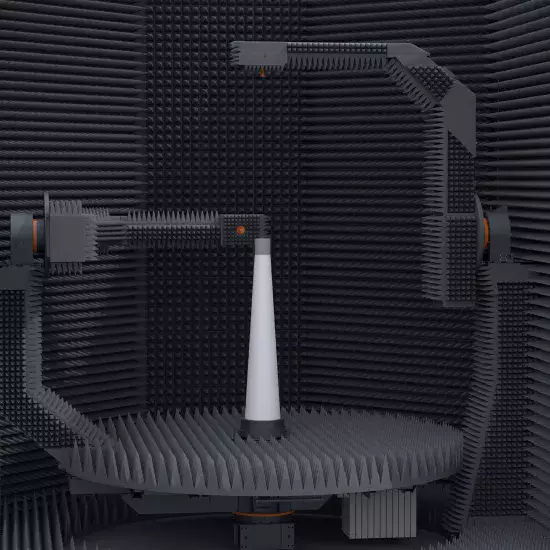
Indoor Ranges
Specifications
Frequency
- 1.0 - 40.0 GHz (typically)
Capabilities
- Equal radius gantry arms
- Incorporates an anti-collision safety features
- Antenna measurement
- Monostatic / bi-static SER and diffracted filed measurements, for material samples as a function of aspect angle and frequency, and diagnostic radar imaging for energy absorption uniformity verification
- Reflection coefficient of planar RAM/material samples as a function of incidence angle and frequency band in bi-static configuration or mono-static configuration at normal incidence
- Insertion loss (transparency) of material/FSS planar samples as a function of incidence angle and frequency, with rotation of the sample
